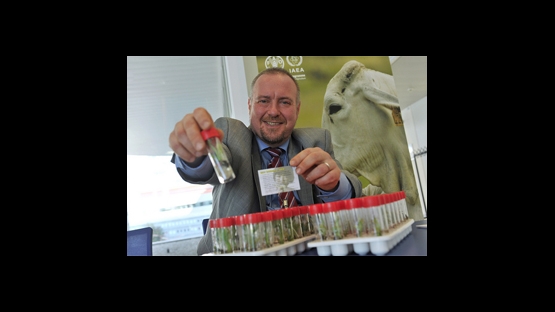Nearly 7billion people live on our planet today and populations continue to grow. Some of us enjoy better nutrition, longer lives and more robust health than our grandparents did a century ago. At the same time, the UN forecasts an increase of mal- or undernourished people, especially in the developing world. More and better food is essential to combat and overcome malnutrition and hunger. Larger and more stable food supplies will need to be developed for food-deficient areas.
Food aid is a vital, yet short-term solution. Long-term projects need to increase crop productivity. Yet, how can we make plants more productive?
In 1928, Lewis Stadler studied the effect of radiation on plant development. He experimented with genetic mutation in crops that occurred either spontaneously, or were induced by exposure to X-rays and ultra-violet radiation. His work represented a milestone in the modernization of plant breeding. Following his example, plant breeders working in the FAO/IAEA joint programme are developing better crops to help IAEA and FAO Member States to improve their food supplies. More than 3 000 officially released varieties from 170 different plant species are now being cultivated and consumed - a significant contribution towards achieving global sustainable food security. In the past two years, the FAO/IAEA joint effort supports crop improvement programs in 95 Member States.
One of these crops is the banana. In the developing world, bananas are an important source of nutrition and a staple in many diets. This food staple is threatened by many factors. A preeminent concern is producing greater yields with less soil, water, money and toil.
In 1997, Dr. Mohamed Ahmed Ali at the Tissue Culture Laboratory, Agricultural Research Corporation, Sudan, began working on a new banana variety with the help of the IAEA. He eventually produced the Al Beely banana. The new "mutant" banana offers considerably improved yield, requires less pesticides, thus cutting farmers´ costs, increasing their incomes and delivering a larger, more stable food supply.
How was it done? First, in the case of the banana, leaf cellules are irradiated for a short time. The miniscule radiation dose, in passing through the seed before completely dissipating, causes a mutation in the banana´s genetic material. The plants that grow from these irradiated cells in the test tube are called "mutants". The plant itself harbours no radiation, nor any signs of exposure. The plant breeders screen all the resulting bananas in the new crop, looking for useful new characteristics. Al Beely, for instance, achieves much higher yields than the comparable local varieties of bananas under cultivation.
An arduous, decade-long research campaign preceded this success. It may never have literally borne fruit without IAEA-sponsored technology: Bananas are sterile; there is no seed in the fruit. Without sex, there is no way to improve the variety through traditional breeding. The breeder would have to search far and wide to find and test better candidates. In cooperation with the IAEA, scientists can acquire the tools to induce beneficial mutations and produce hardy plants. And through "twinning", the desirable traits are reproduced in subsequent generations. The offspring bananas are as healthy and tasty as any other banana.
Lagoda praises Al-Beely as a robust and environmentally-friendly mutant that was created using proven, 80 year-old proven technology. It is also cost- efficient in cultivation, perfect for sustainable, industrial crop production in the developing world.
The term "mutant" sounds grim, but Lagoda explains: "Nature would have produced this mutation at some point. As an example, it took Mother Nature 100 million years to produce the 140 000 known varieties of rice. Today, 1 billion people are starving. Can you wait 100 million years for nature to produce a better-yielding banana? No, we can´t..."
Rather than introducing sequences of a foreign genetic code, a technique applied in genetic engineering, inducing mutations through irradiation simply accelerates the natural, evolutionary process making it much more likely that a breeder will in the course of his lifetime find the one-of-a-kind individual that will "father" new generations of improved crops. This technique is effective in improving taste, yield and resistance to diseases and tolerance to worsening global climatic conditions. With this peaceful application of nuclear science, the IAEA, together with its partner FAO, is helping reduce world hunger and improve food security.


